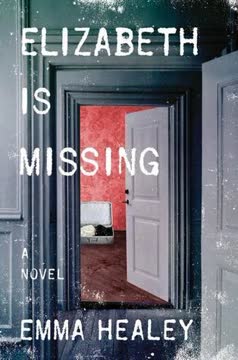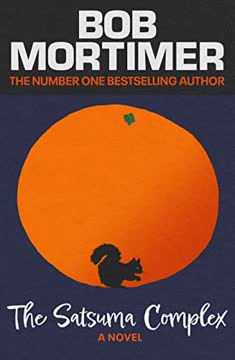Plot Summary
Forgotten Memories and Missing Friends
Maud, an elderly woman, is caught in the fog of dementia, which clouds her daily life and memories. Her friend Elizabeth is missing, and Maud is determined to find her despite her own confusion. Her world is filled with fragments of the past and present, often leaving her disoriented. Her caregiver, Carla, and her daughter, Helen, try to help, but Maud's mind is set on Elizabeth's disappearance. The narrative weaves through Maud's thoughts, revealing her deep sense of loss and the urgency she feels to uncover the truth about her friend.
The Search for Elizabeth Begins
Maud embarks on a quest to find Elizabeth, visiting her friend's house and speaking to neighbors. Her efforts are met with skepticism and dismissal, as others believe Elizabeth is simply away with her son. Maud's notes and reminders become her lifeline, but they often lead to more questions than answers. Her determination is unwavering, yet her mind's unreliability complicates her search. The chapter highlights Maud's isolation and the challenges she faces in a world that seems to have moved on without her.
Clues and Confusion in the Present
As Maud continues her search, she uncovers small clues that suggest something is amiss. Elizabeth's house appears abandoned, and Maud finds a letter addressed to her friend, hinting at unresolved matters. Despite her cognitive struggles, Maud's instincts tell her that Elizabeth's disappearance is not as simple as others believe. Her interactions with her daughter and caregiver reveal the tension between Maud's reality and the perceptions of those around her. The chapter underscores the complexity of Maud's situation and her relentless pursuit of the truth.
Echoes of the Past Resurface
Maud's investigation triggers memories of her sister Sukey, who vanished decades ago under mysterious circumstances. The parallels between Sukey's disappearance and Elizabeth's situation haunt Maud, blurring the lines between past and present. As Maud revisits old haunts and recalls conversations with her family, the narrative delves into her unresolved grief and the impact of loss on her life. The chapter explores the enduring nature of memory and the ways in which the past continues to shape Maud's present.
Unraveling Secrets and Hidden Truths
Maud's search for Elizabeth leads her to confront uncomfortable truths about her own family and the people around her. She discovers that Elizabeth's son has been removing items from her friend's house, raising suspicions about his intentions. Maud's interactions with neighbors and acquaintances reveal a web of secrets and lies, complicating her understanding of Elizabeth's disappearance. The chapter highlights Maud's resilience and her determination to uncover the truth, despite the obstacles she faces.
The Garden's Hidden Horrors Revealed
Helen, Maud's daughter, helps her uncover a chilling secret buried in Elizabeth's garden. As they dig, they find Sukey's remains, confirming Maud's long-held suspicions. The discovery is both a revelation and a burden, as it forces Maud to confront the reality of Sukey's fate. The chapter explores the emotional impact of the discovery on Maud and Helen, as they grapple with the implications of their find and the dark secrets it uncovers.
Confronting the Past and Present
With Sukey's remains unearthed, Maud must confront the painful truth about her sister's death. The investigation into Sukey's murder reopens old wounds and forces Maud to reevaluate her memories of Frank and the events surrounding Sukey's disappearance. As the past collides with the present, Maud's journey toward closure is fraught with emotional turmoil and a renewed sense of purpose. The chapter delves into the complexities of memory, loss, and the search for truth.
Elizabeth's Condition and Maud's Realization
Visiting Elizabeth in a rehabilitation unit, Maud is struck by her friend's frailty and the reality of her own situation. Elizabeth's condition serves as a catalyst for Maud's realization of the importance of confronting her past. The visit prompts Maud to reflect on her own life and the unresolved mysteries that have shaped her existence. The chapter underscores the themes of friendship, aging, and the enduring impact of memory on identity.
Closure and the Weight of Memory
As the investigation into Sukey's death concludes, Maud finds a sense of closure and peace. The truth about Sukey's fate allows Maud to finally let go of the past and embrace the present. The weight of memory, once a burden, becomes a source of strength and understanding. The chapter concludes with a sense of hope and acceptance, as Maud comes to terms with her sister's death and the enduring power of love and memory.
Characters
Maud
Maud is an elderly woman grappling with dementia, yet her determination to uncover the truth about her sister Sukey's disappearance drives the narrative. Her fragmented memories and unwavering resolve highlight the complexities of memory and identity. Maud's character embodies resilience and the enduring power of love and family.
Elizabeth
Elizabeth is Maud's close friend, whose absence prompts Maud's investigation into Sukey's disappearance. Her character serves as a catalyst for Maud's journey toward truth and closure. Elizabeth's condition and relationship with Maud underscore the themes of friendship, aging, and memory.
Helen
Helen is Maud's daughter, who supports her mother through the investigation into Sukey's disappearance. Her practicality and concern for Maud's well-being provide a grounding presence in the narrative. Helen's character highlights the challenges of caring for a loved one with dementia and the complexities of family relationships.
Sukey
Sukey, Maud's sister, vanished decades ago, leaving a void in Maud's life. Her disappearance is the central mystery of the narrative, and her character is revealed through Maud's memories and the investigation into her death. Sukey's fate underscores the themes of loss, family, and the search for closure.
Frank
Frank, Sukey's husband, is a complex character whose jealousy and erratic behavior are central to the mystery of Sukey's disappearance. His actions and motives are shrouded in suspicion, and his character adds layers of intrigue and tension to the narrative.
Carla
Carla is Maud's caregiver, responsible for assisting her with daily tasks. She is pragmatic and often shares sensational stories about crime and danger, which unsettle Maud. Carla's character provides a contrast to Maud's world, as she represents the outside perspective on Maud's condition and the skepticism surrounding her investigation.
Peter
Peter is Elizabeth's son, whose actions and intentions are shrouded in mystery. He is seen removing items from Elizabeth's house, raising suspicions about his involvement in her disappearance. Peter's character is defined by his elusiveness and the tension between his role as Elizabeth's son and the secrets he may be hiding.
Douglas
Douglas is a lodger who lived with Maud's family during her youth. His character is marked by mystery and suspicion, as Maud recalls his interactions with her family and his possible involvement in Sukey's disappearance. Douglas's character adds complexity to the narrative, as his motives and actions remain unclear, contributing to the sense of uncertainty and intrigue.
Plot Devices
Memory and Dementia
Memory and dementia are central plot devices in the story, shaping Maud's perception of reality and her investigation into Sukey's disappearance. The fragmented nature of Maud's memories creates tension and uncertainty, highlighting the challenges of living with cognitive decline and the impact of memory on identity.
Parallel Mysteries
The narrative is driven by parallel mysteries: Sukey's disappearance in the past and Elizabeth's absence in the present. This plot device creates a rich tapestry of intrigue, as Maud's investigation into Sukey's fate is informed by her memories of Elizabeth. The intertwining of past and present adds depth to the story and underscores the enduring nature of loss and the search for closure.
Unreliable Narrator
Maud's role as an unreliable narrator is a key plot device, as her dementia affects her perception of events and her ability to recall information accurately. This device creates tension and suspense, challenging readers to navigate the blurred lines between reality and imagination. Maud's perspective invites readers to question the truth and consider the complexities of memory and identity.
Analysis
"Elizabeth Is Missing" by Emma Healey is a poignant exploration of memory, identity, and the enduring impact of loss. Through Maud's journey, the novel delves into the complexities of living with dementia and the challenges of piecing together fragmented memories. The intertwining mysteries of Sukey's disappearance and Elizabeth's absence create a rich narrative tapestry that underscores the themes of love, family, and the search for closure. The novel invites readers to reflect on the nature of memory and the ways in which the past continues to shape the present. Ultimately, "Elizabeth Is Missing" is a testament to the resilience of the human spirit and the enduring power of love and memory.
Last updated:
FAQ
Synopsis & Basic Details
What is Elizabeth Is Missing about?
- Maud's Fragmented Reality: The novel follows Maud, an elderly woman grappling with worsening dementia, whose perception of the present is constantly interrupted and blurred by vivid, yet often jumbled, memories of her past. Her immediate concern is the disappearance of her friend, Elizabeth.
- Dual Mystery Narrative: Maud's urgent search for Elizabeth triggers a parallel investigation into the decades-old disappearance of her beloved older sister, Sukey, who vanished without a trace in post-WWII Britain. The narrative skillfully intertwines these two mysteries, suggesting a deep, unresolved connection.
- Quest for Truth Amidst Confusion: Despite the skepticism of her daughter, Helen, and her carers, Maud clings to her fragmented clues and notes, driven by an unwavering conviction that something sinister has happened to both Elizabeth and Sukey, forcing her to confront a past her family has long tried to bury.
Why should I read Elizabeth Is Missing?
- Unique Perspective on Dementia: Emma Healey offers a profoundly empathetic and immersive portrayal of living with dementia, allowing readers to experience Maud's confusion, frustration, and moments of startling clarity firsthand, making it a powerful exploration of memory and dementia and identity.
- Gripping, Layered Mystery: Beyond the psychological depth, the novel delivers a compelling mystery that spans generations, expertly weaving together clues from Maud's past and present to uncover a long-buried secret, keeping readers engaged and guessing until the very end.
- Emotional Resonance and Family Dynamics: The story delves into complex family relationships, the burden of care, and the enduring impact of loss and unspoken truths, offering a poignant reflection on love, grief, and the fierce determination of a mother and daughter.
What is the background of Elizabeth Is Missing?
- Post-WWII British Setting: The historical flashbacks are set in a Britain grappling with the aftermath of World War II, highlighting details like rationing, bombed-out streets, and the social anxieties of the time, which deeply influence Maud's formative years and the circumstances surrounding Sukey's disappearance.
- Cultural Context of Memory: The novel subtly explores the cultural context of memory and dementia and aging, particularly how society often dismisses the elderly and those with cognitive decline, contrasting Maud's internal reality with the external world's perception of her.
- Everyday Life and Social Norms: Healey grounds the narrative in the mundane details of mid-20th century life—telephonist exchanges, dance halls, local shops, and community gossip—which serve as both anchors for Maud's memories and crucial elements in piecing together the past.
What are the most memorable quotes in Elizabeth Is Missing?
- "Elizabeth is missing.": This recurring phrase, often repeated by Maud with varying degrees of urgency and understanding, encapsulates the central mystery and Maud's deteriorating memory, becoming a poignant refrain for her relentless search.
- "I don't want to die like that.": Maud's declaration to Helen, referring to her mother dying without knowing about Sukey, reveals her deep-seated fear of unresolved grief and her driving motivation to find answers before her own memory completely fails her.
- "You're not trying to poison us, are you? Because you've tried that once before.": Peter's teasing remark to Helen, years after the rat poison incident, highlights the long-lasting impact of childhood events and the complex, sometimes painful, undercurrents within family relationships.
What writing style, narrative choices, and literary techniques does Emma Healey use?
- Unreliable Narrator, First-Person Narrative: The novel is told entirely from Maud's perspective, making her an unreliable narrator whose fragmented thoughts, repetitions, and non-linear recollections immerse the reader directly into the experience of dementia, blurring the lines between reality and memory.
- Dual Timeline Structure: Healey masterfully interweaves present-day events with Maud's vivid flashbacks to her youth in the 1940s, creating a compelling dual narrative that slowly reveals the connections between Elizabeth's disappearance and Sukey's past.
- Sensory Detail and Repetition: The author frequently employs sensory details (smells, textures, sounds) to ground Maud's memories, and uses repetition of phrases, questions, and observations to reflect Maud's cognitive loops and her desperate attempts to hold onto information.
Hidden Details & Subtle Connections
What are some minor details that add significant meaning?
- The Compact Lid's Recurring Appearance: The broken compact lid, found in the prologue and later rescued from the bin, symbolizes Maud's fragmented memory and the enduring, yet damaged, connection to Sukey, as it was Sukey's item and a key piece of evidence in the garden.
- Snail Trails and Crushed Snails: Maud's repeated observations of snail trails and crushed snails on the pavement subtly foreshadow the vulnerability of life and the destructive forces at play, mirroring Sukey's tragic fate and Maud's own fragile existence.
- The "Mad Woman's" Hawthorn Chewing: The detail of the "mad woman" chewing hawthorn leaves, which Maud remembers as "bread and cheese," connects her to a shared childhood experience with Sukey, hinting at a deeper, more sympathetic understanding of her character and her potential as a witness.
What are some subtle foreshadowing and callbacks?
- Carla's Morbid Stories: Carla's frequent, sensationalized tales of elderly people being locked up, tortured, or robbed subtly foreshadow the grim reality of Sukey's fate and Peter's actions, creating an unsettling undercurrent to Maud's present-day anxieties.
- Douglas's Gramophone Records: The broken gramophone records found in the garden, Sukey's favorites, foreshadow her violent end and the burial site, while Douglas's later confession about smashing them reveals his own grief and anger.
- The "Milk-Bloom" Acacia Tree: Maud's recollection of the poem "Maud" and the line "The slender acacia would not shake / One long milk-bloom on the tree" subtly links her own name to a sense of stillness and unfulfilled potential, contrasting with the violent events unfolding around her.
What are some unexpected character connections?
- Maud and the "Mad Woman": Maud's unexpected empathy and connection to the "mad woman," later revealed as Douglas's mother, Dora, highlights a shared vulnerability and a tragic parallel in their lives, both losing daughters and being misunderstood by society.
- Helen's Mirroring Maud's Past: Helen's childhood rebellion, running away, and later her fierce determination to uncover the truth for Maud, unexpectedly mirror Maud's own youthful defiance and her relentless search for Sukey, showing a cyclical pattern of strength and care.
- Frank's Hidden Kindness: Despite his volatile nature and ultimate guilt, Frank's acts of kindness—helping people move, giving Maud chocolate, his genuine grief for Sukey—add a layer of complexity, suggesting he wasn't purely evil and perhaps acted out of a twisted sense of love or desperation.
Who are the most significant supporting characters?
- Mrs. Winners, the Community Oracle: Mrs. Winners, the gossipy neighbor with the first telephone, serves as a vital, albeit indirect, source of information and community perspective, her observations and pronouncements often containing kernels of truth that Maud later pieces together.
- Katy, the Bridge to the Future: Maud's granddaughter, Katy, represents hope and a generational shift in understanding; her patience, willingness to engage with Maud's confusion, and eventual participation in the search for Sukey symbolize a future where memory and care are valued.
- Douglas, the Silent Witness: Douglas, the lodger, is far more significant than initially perceived, acting as a silent observer and protector in Maud's past, holding crucial information about Sukey and Dora, and his quiet grief mirrors Maud's own unspoken sorrow.
Psychological, Emotional, & Relational Analysis
What are some unspoken motivations of the characters?
- Frank's Desperate Control: Frank's motivation to bury Sukey's body and conceal her death stems from a desperate need to control the narrative and avoid legal repercussions, fueled by his jealousy of Douglas and his criminal "business dealings."
- Helen's Protective Burden: Helen's unspoken motivation is a profound, often exasperated, love for her mother, driving her to protect Maud from her own confusion and the painful truths of the past, even if it means dismissing Maud's concerns or making difficult decisions like selling the house.
- Douglas's Guilt and Loyalty: Douglas's quiet presence and his actions, like feeding his mother and smashing Sukey's records, are motivated by a deep sense of guilt over his mother's mental state and a fierce, unrequited loyalty to Sukey, whom he admired and cared for.
What psychological complexities do the characters exhibit?
- Maud's Memory as a Defense Mechanism: Maud's dementia, while debilitating, also functions as a psychological defense, allowing her to revisit and re-process traumatic events from her youth, ultimately leading her to the truth about Sukey's disappearance that her conscious mind had suppressed.
- The Family's Collective Denial: The Palmer family, particularly Ma and Dad, exhibit a complex psychological denial regarding Sukey's disappearance, choosing to believe she ran off rather than confront the possibility of murder, a coping mechanism that leaves Maud with unresolved grief.
- Douglas's Burden of Secret-Keeping: Douglas carries the psychological burden of knowing about Dora's mental illness and her connection to Sukey's death, leading to his withdrawn nature and his attempts to protect both his mother and Sukey's memory in his own quiet way.
What are the major emotional turning points?
- Helen's Tears in the Bus Shelter: The moment Maud realizes Helen is crying in the bus shelter, mistaking her for a stranger, is a powerful emotional turning point, highlighting Helen's immense burden of care and Maud's fleeting, yet profound, recognition of her daughter's suffering.
- Discovery of the Compact Lid: The finding of Sukey's broken compact lid in the garden, a tangible link to the past, serves as a crucial emotional catalyst, solidifying Maud's conviction and providing a physical anchor for her fragmented memories.
- Maud's Final Clarity about Sukey: The ultimate realization that Sukey is the one buried in Elizabeth's garden, and the subsequent unearthing of her remains, provides Maud with a profound, albeit painful, emotional closure, releasing her from decades of searching and uncertainty.
How do relationship dynamics evolve?
- Maud and Helen's Shifting Roles: The mother-daughter dynamic between Maud and Helen evolves from one of traditional care to a reversal of roles, where Helen becomes the primary caregiver, patiently navigating Maud's confusion while Maud, in her own way, guides Helen to a truth that frees them both.
- The Idealized Sisterly Bond: Maud's memory of Sukey, initially idealized and tinged with youthful jealousy, transforms as the truth emerges, revealing a more complex relationship marked by secrets, unspoken affections, and ultimately, a tragic end that Maud must reconcile with.
- Frank and Douglas's Antagonistic Connection: The relationship between Frank and Douglas, characterized by Frank's jealousy and Douglas's quiet resentment, is revealed to be a central catalyst for Sukey's fate, their hidden animosity culminating in a tragic act that impacts Maud for decades.
Interpretation & Debate
Which parts of the story remain ambiguous or open-ended?
- The Extent of Frank's Intent: While Frank is strongly implicated in Sukey's death, the exact nature of his intent—whether it was a deliberate murder, an accidental killing during an argument, or a desperate act to silence her—remains somewhat ambiguous, leaving room for reader interpretation.
- Douglas's Full Knowledge and Complicity: The narrative hints that Douglas knew more about Sukey's fate than he let on, particularly his knowledge of Dora's presence and his actions with the records, but his full complicity or the reasons for his silence are not explicitly detailed, adding to the mystery.
- The "Mad Woman's" Complete Story: While Dora's identity and her connection to Sukey are revealed, the full scope of her experiences and what she truly "saw" or understood remains partially obscured by her mental state, leaving her as a tragic, enigmatic figure.
What are some debatable, controversial scenes or moments in Elizabeth Is Missing?
- Helen's Decision to Sell Maud's House: Helen's decision to sell Maud's house, though presented as a practical necessity for Maud's safety, can be seen as controversial, raising questions about autonomy, the rights of the elderly, and the emotional impact of such decisions on those with dementia.
- Maud's Violent Outbursts: Maud's moments of aggression, such as smashing the plate in the restaurant or pushing Helen, are debatable, challenging readers to confront the difficult realities of dementia and the loss of control, prompting discussions on empathy versus self-preservation.
- The Family's Initial Dismissal of Maud's Concerns: The repeated dismissal of Maud's worries about Elizabeth and her fragmented memories by Helen and others can be seen as controversial, highlighting societal tendencies to infantilize the elderly and ignore their perceptions, even when they hold crucial truths.
Elizabeth Is Missing Ending Explained: How It Ends & What It Means
- Sukey's Body Discovered: The novel culminates with Helen and Maud unearthing Sukey's skeletal remains in Elizabeth's garden, confirming Maud's long-held, fragmented memory that Sukey was buried there, bringing a shocking resolution to the decades-old mystery.
- Frank's Implied Guilt and Motive: The evidence, including Sukey's compact, the bird skeletons, and Maud's recovered memories of Frank's jealousy and violence, strongly implicates Frank Gerrard in Sukey's death, suggesting he killed her during an argument and buried her to conceal the crime.
- Maud's Fragmented Closure and Enduring Love: While Maud's dementia means her understanding of the truth is fleeting and incomplete, the discovery provides a profound sense of closure for her and Helen, affirming Maud's intuition and validating her lifelong search, underscoring the enduring power of love and memory despite cognitive decline.
Review Summary
Elizabeth Is Missing is a compelling debut novel that explores dementia and mystery through the eyes of Maud, an elderly woman searching for her missing friend. Readers praised Healey's portrayal of memory loss and the intertwining of past and present narratives. While some found the story emotional and insightful, others felt it was repetitive or predictable. The book received mixed reviews, with many appreciating its unique perspective on aging and mental decline, but some finding the pacing slow or the resolution unsatisfying. Overall, it's considered a thought-provoking and poignant read.
Similar Books
Download PDF
Download EPUB
.epub digital book format is ideal for reading ebooks on phones, tablets, and e-readers.












